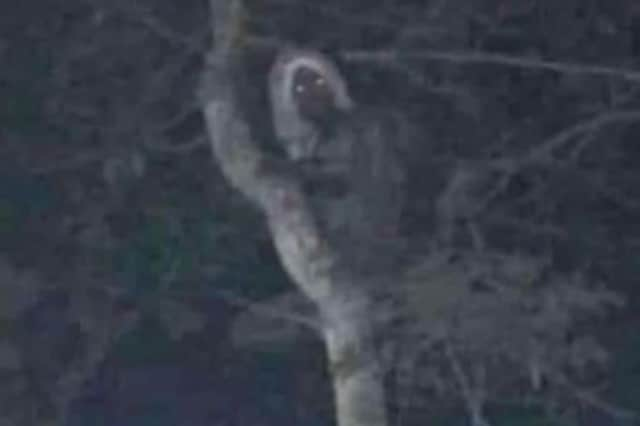Alux meaning: what are aluxes, mythical woodland creatures explained - what does Mexican leader’s photo show?


The president of Mexico has shared a picture on social media that he claims shows a woodland spirit from mythology that resembles an elf.
Long a proponent of indigenous cultures and beliefs, president Andres Manuel Lopez Obrador did not appear to be joking when he shared the image of an "alux," a mischievous woodland spirit from Mayan folklore.
Advertisement
Hide AdAdvertisement
Hide AdThe image was "taken three days ago by an engineer, it appears to be an alux," Lopez Obrador wrote, adding "everything is mystical."
Engineers and workers are in the Yucatan peninsula - where the ancient Mayan civilization reached its height from 300AD to 900AD - constructing a tourist train that is the president’s pet project.
But does the image really show an alux, or is the mystical image explained by more realistic means? And what even is an alux in the first place? Here is everything you need to know about it.
What is an alux?
According to traditional Mayan belief, “Aluxo’ob” are small, mischievous creatures that inhabit forests and fields and are prone to playing tricks on people, like hiding things. They are said to stand at just above knee height, and resemble miniature versions of traditionally dressed Maya people.
Advertisement
Hide AdAdvertisement
Hide AdAccording to tradition, Aluxo’ob are typically invisible but have the ability to manifest physically in order to communicate with - and frighten - humans.
Aluxo’ob tend to be found near natural features like forests, caves, stones, and fields, but can also be enticed to move somewhere through small offerings, which some people leave to appease them.
Some Maya believe that when a farmer constructs a small house on his property, usually in a maize field, the Aluxo’ob are summoned, and will whistle to frighten away predators or crop thieves while patrolling the fields at night for seven years, assisting in the growth of the corn.
Tradition states that the farmer is required to seal the alux inside the small house by shutting the windows and doors at the end of seven years - failure to do so will result in the alux running wild and playing tricks on people.
Advertisement
Hide AdAdvertisement
Hide AdStories say Aluxo’ob will occasionally stop and request an offering from farmers or travellers, and it is believed that the alux will ward off thieves or even bring luck if their requirements are met. Aluxo’ob are said to be very helpful if they are treated with respect.
Where did the stories come from?
The ancient Mayan civilization reached its height from 300AD to 900AD on the Yucatan Peninsula and in adjacent parts of Central America, but the Mayas’ descendants continue to live on the peninsula.
Many continue speaking the Mayan language and wearing traditional clothing, while also conserving traditional foods, crops, religion, and medicine practices, despite the conquest of the region by the Spanish between 1527 and 1546.
Sometimes, the words "duende" - the Spanish word for a supernatural being or force, most frequently a goblin - and "alux" are used synonymously.
Advertisement
Hide AdAdvertisement
Hide AdIn fact, some people believe that the Maya’s belief in Aluxo’ob may have originated as a result of interactions with the Spanish or pirates during the 16th century. The British Isles, where belief in faeries was widespread at the time, produced many of the pirates of that era.
What does the president’s image show?
The night-time photo shared by Lopez Obrador appears to show a tree with a branch forming what looks like a halo of hair, and what may be stars forming the figure’s eyes.
Comment Guidelines
National World encourages reader discussion on our stories. User feedback, insights and back-and-forth exchanges add a rich layer of context to reporting. Please review our Community Guidelines before commenting.
